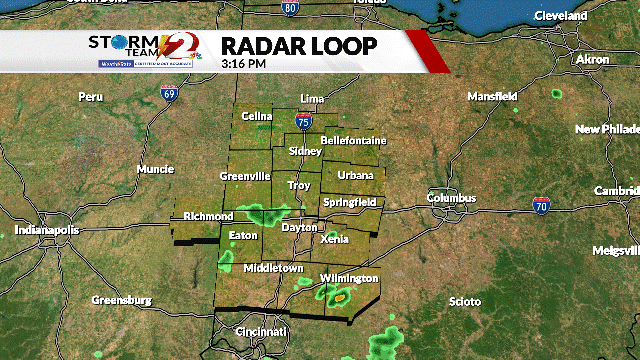You can watch NBC4’s weekly political show “The Spectrum with Colleen Marshall” in the video player above.
COLUMBUS, Ohio (WCMH) – With the Centers for Disease Control and Prevention estimating there are more than 2.3 million disabled adults in Ohio, about 1 in 4 members of the state’s voting-age population may face accessibility issues in the election Nov. 8.
Kevin Truitt, the legal advocacy director at Disability Rights Ohio, said one of the most important things a disabled person can do ahead of the election is developing a plan for casting their ballot.
“It’s important for especially policymakers, people in power, to know how systems operate and how they may fail certain populations, including people with disabilities,” Truitt said.
A voting plan not only includes who and what to vote for, Truitt said, but also when to vote, in what form, and with what accommodations. Accessibility needs are unique to each individual and can vary widely, which is why disabled Ohioans have different options for voting.
For people facing accessibility issues or who have questions, Disability Rights Ohio operates a hotline on Election Day from 6:30 a.m. to 7:30 p.m. at 614-466-7264.
Voting at home
Because Ohioans are entitled to request absentee ballots without providing a reason, the option is common among disabled and immunocompromised voters who cannot safely vote in person.
Voters have until Saturday to request an absentee ballot. Completed absentee ballots must be returned to the county board of elections by 7:30 p.m. on Election Day or be postmarked by Nov. 7, the day before Election Day if mailed.
People in nursing homes, inpatient care facilities, or who are otherwise confined to public or private institutions are entitled to vote on Election Day. Two election officials from different political parties will hand-deliver a ballot and return it to the county board of elections. You can find contact information for your county board of elections here.
Ohio also has an accessible absentee voting system for people who cannot vote via traditional absentee ballot, such as people who use screen readers. Also known as the remote ballot marking system, the accessible absentee ballot can be sent to any device that connects to the internet so that a person can use their assistive technology to vote.
“People who are blind or have vision impairments often need a way to vote privately and without relying on other people,” Truitt said.
Accessible absentee ballots must be printed and returned to the county board of elections and have the same deadlines as traditional absentee ballots.
You can request an accessible absentee ballot here.
Accommodations at the polls
Federal law requires all Ohio polling locations to be accessible under the Americans with Disabilities Act.
ADA requirements mean that there must be accessible options for:
- Parking
- Paths to entrances
- Entrances
- Paths to the voting area
Every polling place also must have at least one accessible machine, with features including large print and zooming options for people with low vision; be height-adjustable and tiltable for wheelchair users; and have a plug-in option for a personal assistive device such as a screen reader.
Curbside voting is also an option for voters with disabilities. Two poll workers from different political parties will deliver and retrieve the ballot – while the person votes from the comfort of their vehicle.
But accessibility extends beyond a polling location’s physical structure – and disabilities extend beyond physical or easily visible impairments and conditions.
Every disabled voter is entitled to have a support person with them, as long as that person isn’t a political candidate, the voter’s employer or a representative from the voter’s union. Two poll workers from different political parties may also help a person vote.
Truitt said one of the most common misconceptions he encounters is the belief that people with legal guardians – such as some people with intellectual, developmental or cognitive disabilities – cannot vote. As long as they’re otherwise eligible, people with legal guardians, powers of attorney or conservators have the right to vote.
“If you have a legal guardian, you have the right to vote – and that right is yours, not your guardian’s,” Truitt said. “Your guardian can’t vote for you or tell you how to vote or prevent you from voting.”
Emergency accommodations
If you have been unexpectedly hospitalized in the days before Election Day, you can still vote – as long as you submit a hospitalized absentee ballot application to your county board of elections by 3 p.m. on Election Day. If you’re hospitalized in the same county you’re registered to vote in, two representatives from your county’s board of elections can bring the ballot to you and deliver it to the board office to be counted. Otherwise, a designated member of your family can retrieve the ballot for you and deliver it to your county election board.




















































